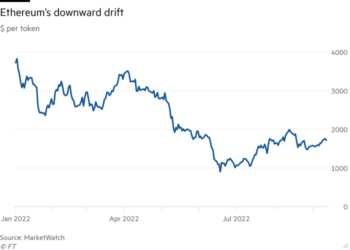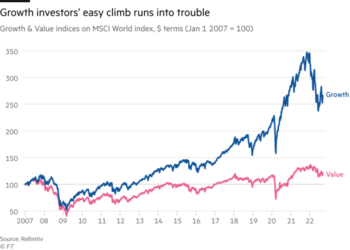This week some of the most powerful executives, actors and creatives in Hollywood will descend on Manhattan to make their annual programming pitch to advertisers: a boozy extravaganza with $20bn at stake.
The “upfronts” are a vestige of an entertainment world once dominated by analogue television, lavish commercials and fresh seasons of hit shows released each autumn. The rise of Netflix, which was staunchly against running advertisements, broke that model.
But Netflix’s abrupt change of heart on advertising just a few weeks ago may turn that around.
Over the past few years, the excitement surrounding upfronts week waned as television companies set their sights on streaming services — and star-studded parties were replaced with virtual presentations due to the pandemic. Even though television advertising still makes more than $60bn a year, dwarfing the size of trendier mediums such as podcasts, it was a format that appeared set to decay in the long term alongside cable television.
But advertising is back in vogue. In the past few months, as Netflix stumbled, inflation soared and the stock market tanked, the streamer, along with the other giant of the business, Disney, announced that they would launch cheaper, advertising-supported versions of their services.
“It is scary if the only way to reinvigorate growth is offering cheaper products that worsen the consumer experience, essentially making it more like the dying linear TV experience,” said Rich Greenfield, an analyst at Lightshed partners.
Accepting advertising is a step that Netflix’s co-founder Reed Hastings had resisted for years. As recently as March 8, the company’s chief financial officer told a conference that Netflix would “never say never, but it’s not in our plan”, adding that “for now it doesn’t make sense for us”.
Hastings reversed this just six weeks later after revealing that Netflix would lose 2mn subscribers in the current quarter. Company officials have given scant information publicly about when or how it would roll out an ad-supported version of the service.
Despite Netflix’s lack of details, advertisers attending the upfronts this week are excited about the possibility of finally being able to reach its binge-watching audiences. Having seen traditional TV audiences decline sharply over the past decade due to “cord cutting”, a successful ad-supported streaming service from Netflix or Disney Plus could give a boost to advertisers.
Advertisers see “a great untapped audience” of Netflix viewers who are walled off from them, says Brian Wieser, president of business intelligence at GroupM, the WPP-owned agency.
“Advertisers are very keen to find a new source of inventory, and especially the opportunity to reach [streaming] audiences that have otherwise been hard to reach,” Wieser said.
Netflix and Disney have the same objective: to add more subscribers offering a cheaper service. The trick is to ensure that the ad-supported service does not drain away too many full-price customers, while also reaching enough people to attract quality advertisers. “These are the trade-offs they have to contemplate,” Wieser cautions.
Bob Chapek, Disney’s chief executive, said last week that the ad-supported service would help Disney Plus, which has roughly 137mn subscribers, gain a broader audience when it rolls out this year. It could also be essential to his goal of reaching 230mn to 260mn subscribers by 2024, a metric investors are watching closely.
“We believe it’s good for the consumer because it’s going to give us another entry price point,” he said. Disney has a head start over Netflix, since it also controls the Hulu streaming service, which has an ad-supported tier, and experience of selling ads through its traditional TV services, such as ABC.
“There’s nothing that we need to go acquire or, frankly, even in any significant way develop anything new. This is something that’s well-greased,” Chapek said.
Other streaming services in the US and around the world already have ad-supported streaming, including Warner’s HBO Max, NBCUniversal’s Peacock, and Paramount Plus.
It is less certain how Netflix plans to go about selling advertising. It could use an outside company or develop a sales force in-house, which would probably require significant hiring. It could also choose to acquire an advertising company. But it is still unclear how committed Netflix is to the business. Hastings told investors he could outsource the work to “other people [who would] do all of the fancy ad-matching”.
“It’s not likely that advertising will become a core part of Netflix’s business,” Wieser predicts.
Netflix is not participating in the upfronts this year, having only weeks ago decided to embrace advertising. But Disney, NBCUniversal, Warner Bros Discovery and others will trot out their stars to woo the people in charge of marketing budgets and lock down billions of dollars in spending commitments. Advertisers committed about $20bn upfront for the 2021-22 television season, rising 8 per cent over the previous year, which was constrained by the pandemic.
Jason Kilar, the former chief executive of Warner who introduced HBO Max’s ad-supported product, recently told Puck News: “[We] couldn’t start [advertising] soon enough because we recognise that these things are all about people’s household economics, and we want to make this service as affordable as possible to as many people on the planet.”











